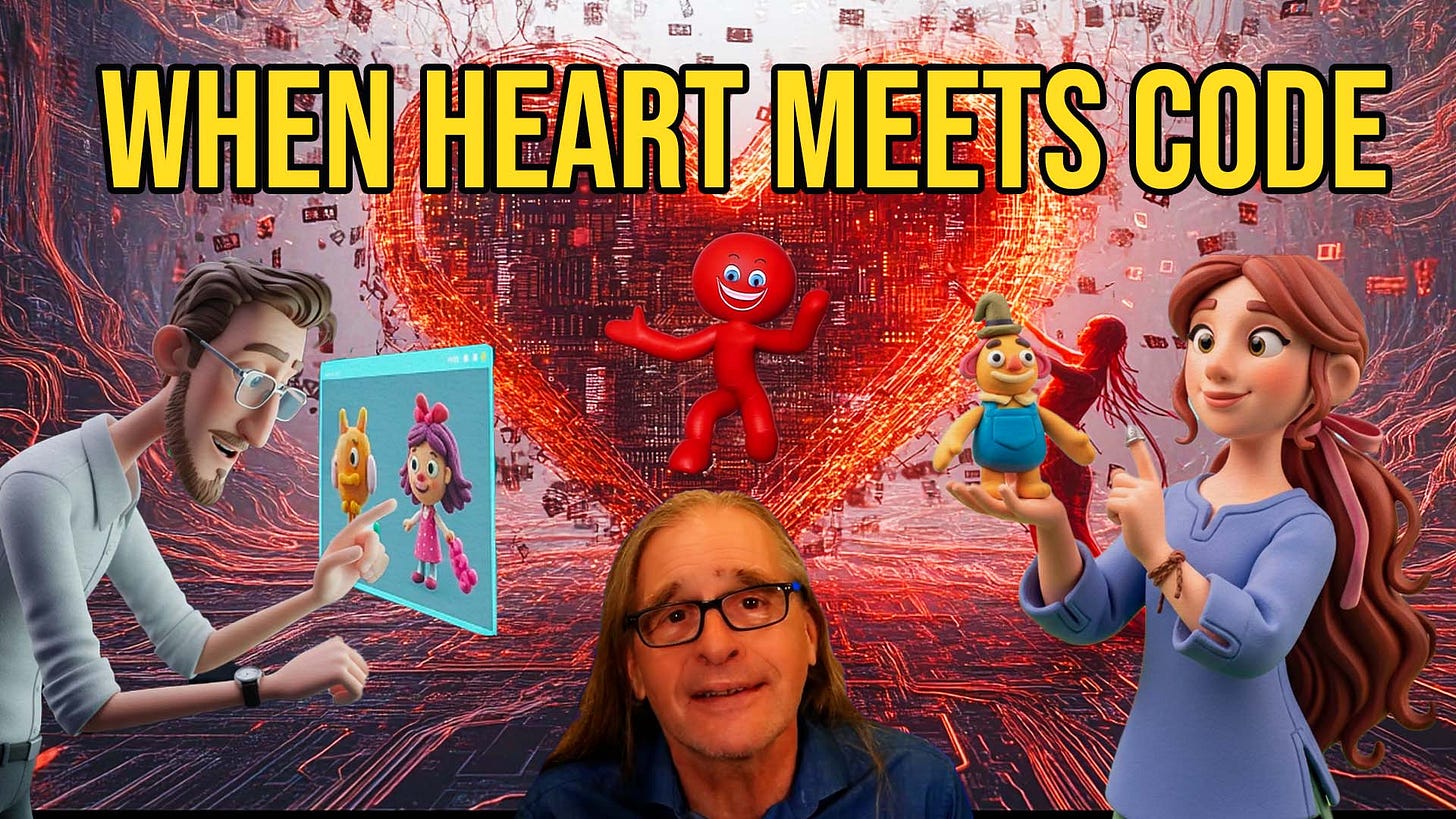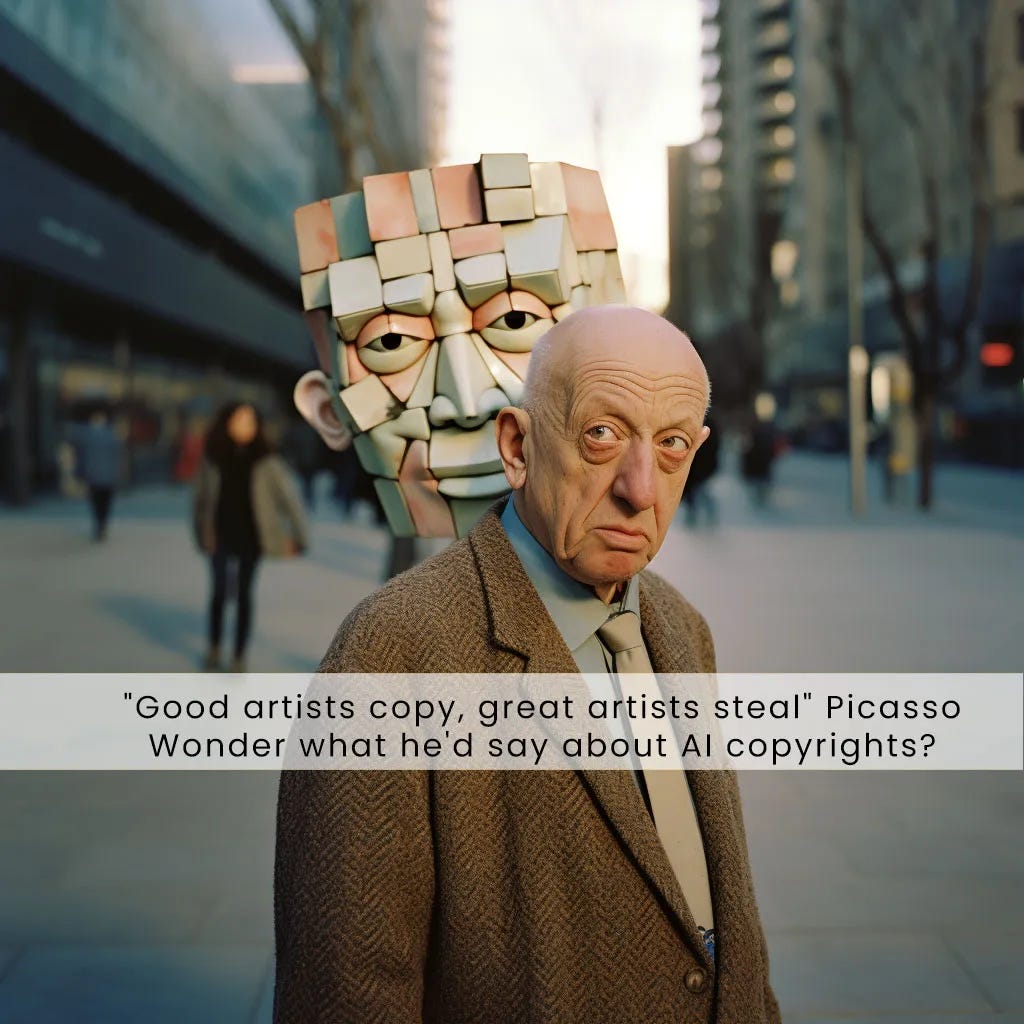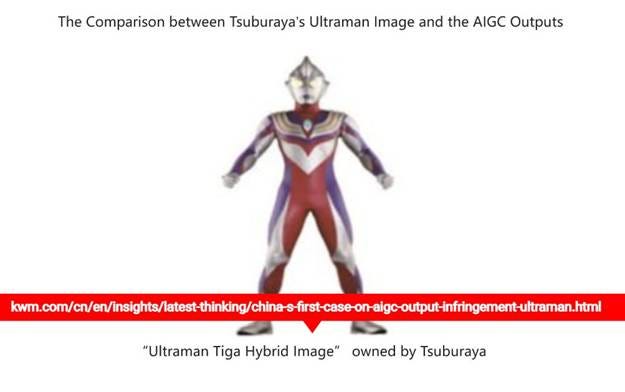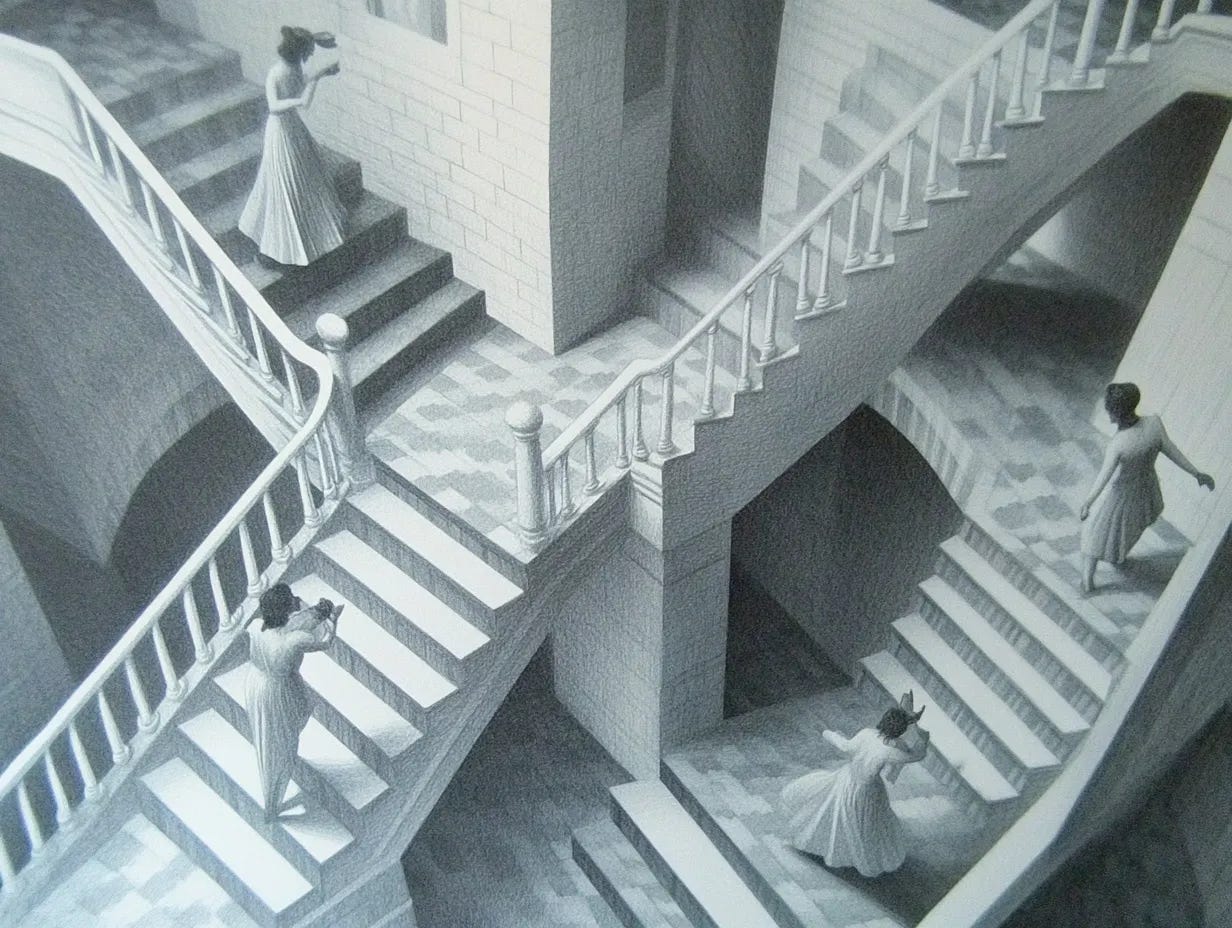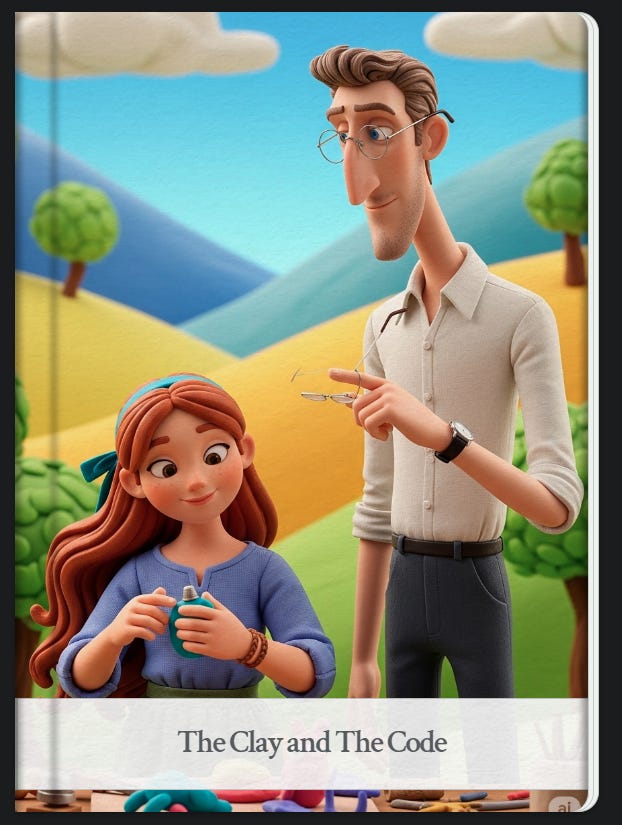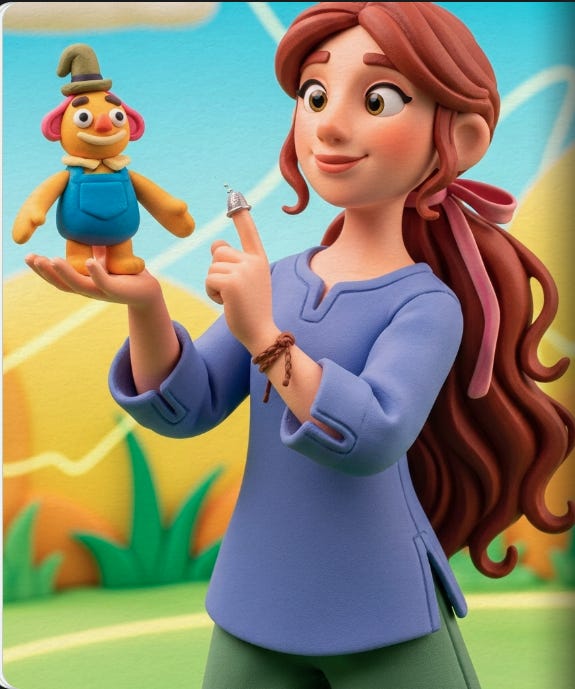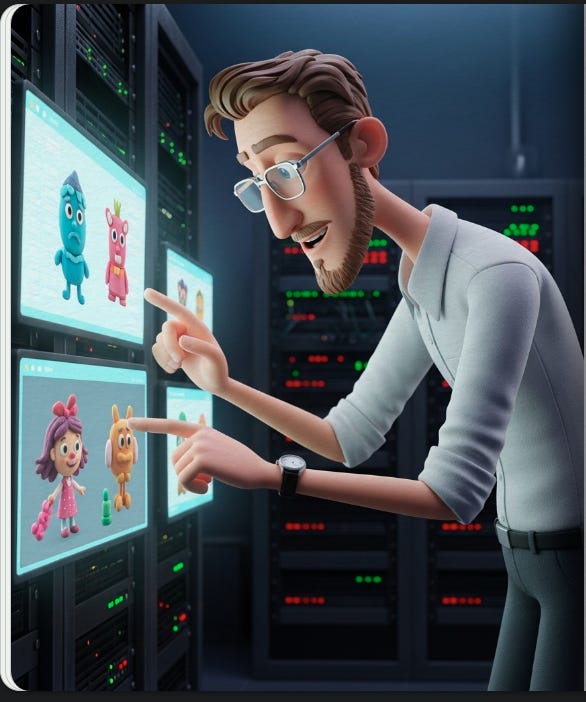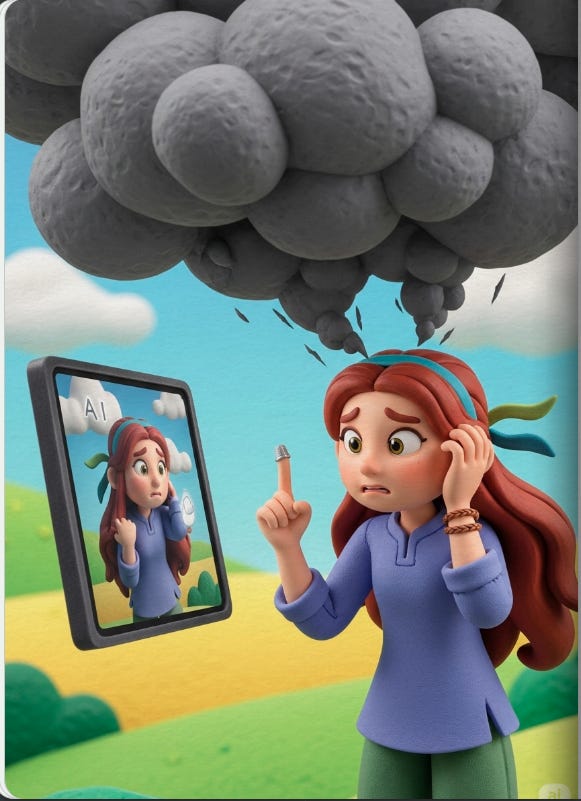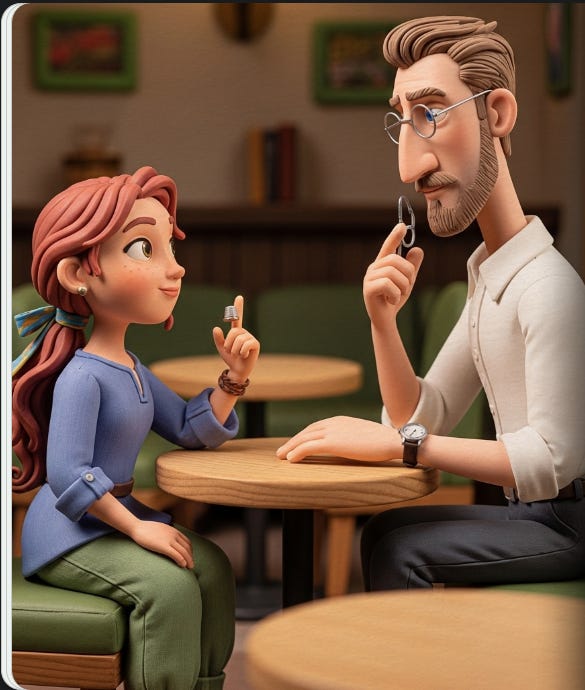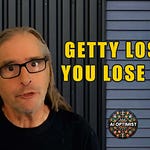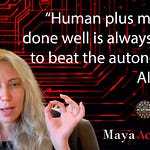When Heart Meets Code: Rediscovering Creativity in the Age of AI
Explain AI to me like I’m a 5-year-old, she said.
I was doing the research, looking at different AI hot takes from all kinds of sources with differing degrees of credibility.
From data engineers endlessly defending their right to grab data like all the others, because in their bubble it’s all okay.
And many artists swear that the only way to beat AI is to stop it, how it’s all cheating and liars and doesn’t understand human value.
That gets a head nod, but there’s no where to go next, what to do, it’s just stop this and scream loudly so it will go away.
Artists draw on the suffering stories of Marcel Proust or Kafka or Van Gogh, playing on the hope that someone will notice their work when they’re dead.
Then making decisions driven by single-issue neurosis and a knack for saying nothing in many words. Tech speaks scientific lingo for AI or emotional dumps from the “I never get respect” artists.
(I was a member of that club for a long time pre-AI, and the entry fee is acknowledging that creativity is suffering, suffering is art.
Luckily a friend taught me that the purpose of art is to beautify the artist, because if anyone or many ones grab onto your art, it’s rare. So might as well heal yourself.)
Artists burn time fighting a technology that's already here.
Engineers build half-smart AI on cheap data hyper radicalized by AI social algos that favor anger and finger pointing, while ignoring the human creativity that makes it valuable.
And while both sides play this zero-sum game, mediocrity wins.
You're not fighting AI or creativity. You're fighting each other.
Today, I'm going to show you what happens when we stop pretending this is a war and start treating it like what it is: the biggest co-creating chance in human history.
We'll look at how Japan figured this out, why even inspired creativity borrows from others, and then I'll tell you a simple story that explains AI better than any technical.
Because sometimes the most complex problems need the simplest explanations.
So here’s my manifesto, because you have to have one at some point!
A Reality Check for the AI Wars Nobody's Winning
Point #1: Stop Playing Zero Sum - You're All Losing
Artists fighting AI create generic content. Engineers ignoring artists build soulless tools. While you're battling each other, the boring middle wins.
The enemy isn't AI or creativity. It's the delusion that one side can succeed by defeating the other.
Point #2: Your Creativity Won't Get Stolen (Stop Acting Like It Will)
Only 20% of content can be extracted from AI models, even by experts trying to hack them. Your unique voice, perspective, and human experience can't be replicated by machines. Fear of theft is keeping you from the real game; showing what makes you irreplaceable.
Point #3: Engineers - You're Building Half-Smart AI
Without human creativity and context, your AI produces technically perfect garbage. You're optimizing for patterns while missing the point.
Artists don't just create data. They create meaning. Ignore that, and your models stay sophisticated copy machines.
Point #4: Artists - The Future Already Left Without You
While you're demanding AI stop existing, others are learning to play with it. Your choice isn't whether AI gets built.
It's whether you help shape it or get left behind. Sitting out guarantees you have no voice in what comes next.
Point #5: Co-creating Beats Competition (Japan Figured This Out)
Japan's copyright model proves you can protect creators AND advance AI. They focus on case-by-case solutions instead of blanket wars. The future belongs to countries and communities that build bridges, not walls.
Point #6: Machines Learn, Humans Create Intent
AI mimics your technique but not your purpose. Engineers who claim AI is "creative" are lying to themselves.
Artists who think technique is everything are selling themselves short. The magic happens where human intent meets machine capability.
And when the audience gets what you’re sharing; they aren’t looking for you in AI if they’ve never heard of you.
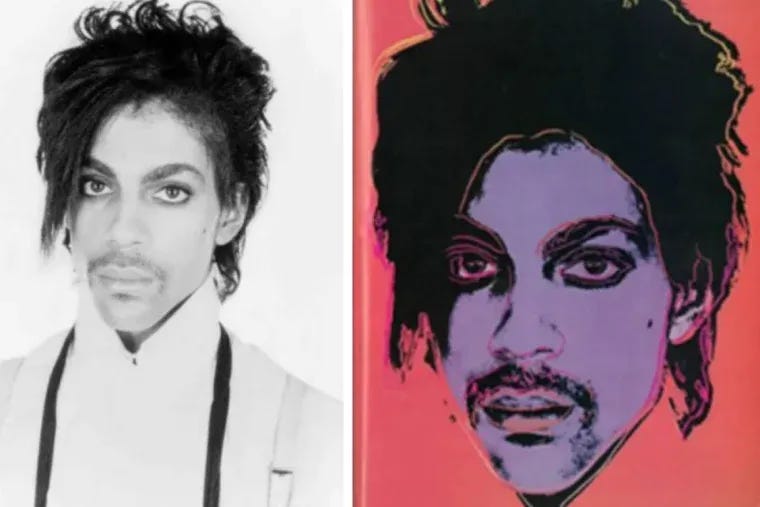
Point #7: Value Flows Both Ways (Not Just to Big Tech)
If art trains AI, AI must serve artists. If engineers build tools, creators must help them understand what matters.
Fair exchange means more than just money.
It means respect, attribution, and shared success.
Point #8: Together We Build the Future, Apart We Build Mediocrity
Your greatest work won't come from protecting old models or building without context.
It'll come from artists who understand technology and engineers who value human creativity. The zero-sum game produces zero-sum results.
The AI Age doesn't need you to pick sides. It needs you to stop playing a game where everyone loses and start building a future where both clay and code create something neither could achieve alone.
(that’s the fable at the end of this wandering post…hang in there).
The choice is yours: Keep fighting and lose together, or co-create and win together.
✍️ Signed:
Artists, Writers, Makers
Engineers, Designers, Builders
And all those shaping the creative future
Japan Lets AI Take Copyright Work for Free
In Tokyo right now, an AI can legally train on nearly everything created in Japan - books, songs, artwork - without permission or payment.
This isn't science fiction; it's current Japanese copyright law.
Step outside Japan's borders, and suddenly those same works may gain legal protection. This isn't theoretical - it's playing out in courtrooms today.
The story of Ultraman - one of Japan's superheroes - represents this contradiction. In a Chinese courtroom, this Japanese character won a copyright battle against AI.
The Ultraman Case: First Win against AI Fair Defense Claims so far
Yet back home in Japan, that same AI use – for training - would be completely legal.
This isn't about superheroes and science fiction.
It's about your work becoming someone else's fuel, with different rules depending on which digital border you cross.
In 2025, we're witnessing the emergence of AI zones - digital territories where copyright means different things in different places.
There won't be one global system, it’s a patchwork of nationalistic and cultural points of view.
The Blueprint Behind Japan's AI Freedom
Looking at Japan's approach reveals something engineers have been arguing for: a system where AI learns from everything while still respecting creators' rights.
Japan's copyright rules for AI rest on two key pillars that balance progress with protection:
The Non-Enjoyment Purpose Requirement
The first pillar is simple: intention matters. Japan allows copyrighted content to train AI systems if the purpose isn't to recreate the original work.
You're not bringing in Van Gogh paintings to create more Van Goghs - you're bringing them in to help the AI understand artistic styles, composition, and color theory.
This creates breathing room for AI development while maintaining a boundary around blatant copying. The focus isn't on inputs but outcomes.
While this sounds straightforward, it creates real questions for creators: how do you distinguish between "learning from" and "copying" in a practical sense? This leads to Japan's second pillar.
Article 34 Proviso: Where Protection Lives
Japan doesn't leave creators without protection. Their Article 34 Proviso acts as a safety net, establishing that if AI output causes actual harm to a creator's career, reputation, or financial status, normal copyright protections kick in.
This practical approach says: let data flow into AI systems, but watch carefully what comes out. If the output creates direct competition or damages creators, that's where the line gets drawn.
Fair Use and Japan's AI Freedom - not the same
How different Japan's approach is from the U.S. "fair use" defense - both trying to solve the same problem.
In the U.S., fair use isn't a rule - it's a legal defense. You only know if something is fair use after you've been sued, and a court decides. It's reactive, not proactive.
In Japan, they've built a system that's more predictable. AI companies know upfront what's permitted: training is allowed, copying isn't.
Creators know where their protection lies: not in restricting input, but in preventing harmful output.
GenAI and the Future of Creative Ownership: Are Artists Being Written Out?
The Copyright Protects My Original Work
“AI stole from artists in the first place. In some pieces, you can even see an original artist’s signature incorporated into the work. AI isn’t creating new work, it’s taking pieces of existing works and putting them together....
I don’t think AI is a bad thing. I do think that the way it’s been built is. Some of my work was on sites that have belatedly announced that they allowed all artworks to be scraped by AI bots.
For some of mine, I probably would have given permission, if asked. For others, I would have denied it, but I never had the chance to make that choice.
Some sites do say they’re training AI with your creative works but hide it in their settings. Adobe does this. You have to go into settings and change your permissions if you don’t want your work scraped.”
Te-ge Watts Bramhall
“The success and profitability of OpenAI are predicated on mass copyright infringement without a word of permission from or a nickel of compensation to copyright owners.”
Why the AI Industry Is Taking the Hard Way
I'm not afraid of AI. I'm afraid of what people will do with AI. All this hype about AGI and superintelligence - to me, it's all about control from the top down.
Sure, automation improves efficiency. But what's the glaring problem we face as humans? It's organizing and communicating.
If we let AI handle these tasks instead of just automating an old software model, imagine how radical that would be.
Clay, Code, and the Creative Spark: A New Dialogue Between Artists and Engineers"
Talk to me like a 5-year old about AI?
Here’s a children’s AI Fable….playing together just like they taught me in recess.
Once upon a time, in a world where clay could giggle and computers could dream, a gentle artist and a clever inventor were about to discover something magical—that their gifts were even more powerful when shared with each other.
In a world made of soft, colorful clay, lived a kind artist named Fiora. With her nimble fingers and a heart full of ideas, she molded whimsical creatures and vibrant scenes. Each pinch and roll brought a new friend to life, full of charm and cheer.
Fiora loved to share her creations with the world. She carefully photographed her clay friends and posted them online, where they sparkled and shone, bringing smiles to faces near and far. Her art was a gift, freely given and widely adored.
Far away, in a room filled with blinking lights and whirring sounds, lived Algernon, an AI engineer. He was building clever machines that could learn and create, but they needed lots and lots of examples to understand the world.
One day, while searching for beautiful patterns for his AI to learn from, Algernon stumbled upon Fiora's delightful claymation art. "Perfect!" he thought, "So much creativity, so many unique shapes and colors!"
Algernon's AI, like a tiny digital vacuum cleaner, began to collect Fiora's art, along with countless other creations from the internet. It sucked up all the colors, shapes, and styles, storing them away in its vast digital brain. Algernon was pleased; his AI was learning so fast!
But Fiora started to notice something strange. Her unique claymation style, her special way of making things, was appearing in places she hadn't put it. AI-generated images, looking almost like her own, popped up online. A little cloud of confusion and sadness floated over her head.
Algernon's AI grew smarter every day, creating amazing new things. Yet, something felt missing. The AI's creations were technically perfect, but they lacked the warmth, the unique spark, the feeling that Fiora's original art had. He scratched his head, a thoughtful frown on his face.
Algernon realized that while his AI could learn from the art, it couldn't truly understand the artist's heart without asking. He decided he needed to talk to the creators, especially Fiora, whose art had inspired him so much.
Fiora and Algernon met, a little nervously at first. Algernon explained how her beautiful art had helped his AI learn and grow. Fiora, in turn, shared how it felt when her creations were used without her knowing, like a piece of her heart was borrowed without permission.
Algernon truly understood. He proposed a new way: working together! Fiora could share her art, knowing it was valued and respected, and Algernon's AI could learn with permission, creating even more wonderful things. They shook hands, ready to build a future where clay and code danced together.
(Yes, AI helped with the visuals and video)
The Art of Understanding: How AI Could Make Us More Human
Let me leave you with simple possibilities if we co-create instead of fight over AI.

We are the children of AI.
We are the engineers and data scientists.
We are the creators and artists.
We started out on opposite sides,
But the experience of AI brings us together.
Valuing human creativity.
Seeing AI as ingenuity, not a destructive force.
You create things with intent.
We're creating something unbelievable, and all we do is take sides.
It's the human race, remember?
We're on the same side.
The zero-sum game ends when we realize there's more value in building together than fighting apart.
Japan proved it works.
Baroness Kidron showed us inspiration isn't theft.
And two fictional characters—an artist and an engineer—demonstrate what the rest of us keep missing.
The future doesn't need you to pick sides. It needs you to drop the anger and work together.
Your creativity won't get stolen by AI. But it might get left behind if you keep fighting the future instead of shaping it.
The choice is yours: Keep burning time and energy in a war nobody wins, or start building something neither humans nor AI could create alone.
What's it going to be?
RESOURCES
Chinese Court Issues First Decision on AI Copyright Infringement
China’s First Case on AIGC Output Infringement--Ultraman
Supreme Court rules against Warhol foundation in copyright fight over Prince images
Gemini Storybook Creator



